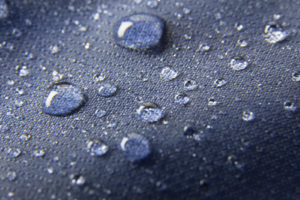Geosynthetics are part of a flexible, cost-effective infrastructure that helps to treat, store and deliver clean water around the world.

If you’ve had a glass of clean water today, you can likely thank a geosynthetic product. Geosynthetics perform behind-the-scenes work to ensure communities have access to adequate potable water and clean waterways. They also hold promise in delivering clean water in emerging markets—a meteoric task considering that 783 million people don’t have access to this limited resource. From wastewater treatment to environmental remediation, geosynthetics offer efficient, economical solutions worldwide.
Geosynthetics companies that are in the business of protecting and preserving the world’s limited water resources must meet numerous technical, performance and regulatory requirements. Even when adhering to stringent production practices, fabric suppliers and end product manufacturers recognize the importance of adaptability and continuous improvement to meet evolving customer expectations—and to differentiate themselves from competitors.
In addition to continuously enhancing their offerings, manufacturers of geosynthetics must stay on top of changing regulations. It can be a complex undertaking because of the “wide variety of certification with different criteria in different regions and the high cost involved for certification testing,” said Boris Kühling, product manager at Heytex Group of Bramsche, Germany. “Growing consumer consciousness toward sustainability and health also leads to constant extension of necessary certificates.”
When fresh water is easily available from the faucet, people rarely think about how it got there. But for the millions currently without access to clean drinking water—and millions more who are affected when natural disasters like hurricanes, earthquakes and tsunamis hit—engineered textiles provide an important piece to solving this puzzle.
“Climate change is one of today’s key challenges, with some areas prone to flooding and storms and other areas prone to drought,” Kühling said. He also cites the stream of refugees in the Middle East and Africa as another group that struggles with access to potable water. In these populations, geosynthetics offer the attributes of flexibility, light weight, comparatively low costs and logistical advantages in applications, such as mobile water purification and transport, temporary barriers and spill containment.
The World Wildlife Fund estimates that by 2025 two-thirds of the world’s population may be facing water shortages. The geosynthetics industry is working to put a dent in that figure by supplying the liners, contaminant containers, storage and transport tanks, and water-harvesting technology to keep water clean, safe and flowing.
 TEXTILES.ORG
TEXTILES.ORG


